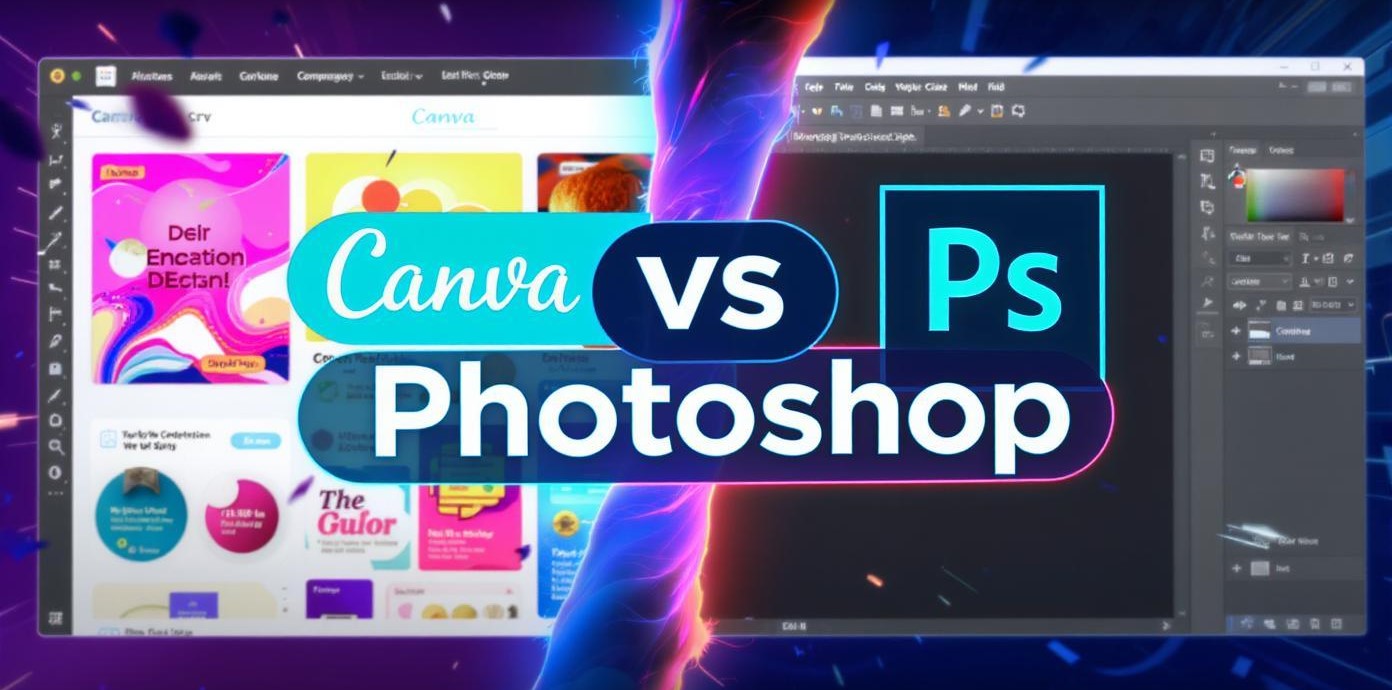In the fast-paced world of digital creativity, choosing the right design tool can significantly impact your productivity, design quality, and brand presentation. Two of the most widely used tools in the design industry are Canva and Adobe Photoshop. Each offers a unique approach to design, tailored to different user needs.
So, which tool is better for your design needs in 2025 — Canva or Photoshop? This article will help you decide by exploring their key features, strengths, weaknesses, pricing, and ideal use cases.
Overview of Canva and Photoshop
Canva The Modern Design Platform for Everyone
Canva is a web-based graphic design platform known for its drag-and-drop interface, user-friendly templates, and ease of use. It targets non-designers, social media managers, marketers, and small business owners. Canva simplifies the design process, making it accessible to everyone.
Top features:
Thousands of customizable templates
One-click background remover (Pro feature)
Cloud-based collaboration
Integrated stock photos, videos, and icons
Built-in content calendar and social media scheduling
Photoshop – The Industry Standard for Professional Designers
Adobe Photoshop is the leading professional image editing software used by graphic designers, photographers, and digital artists. It offers advanced control over every pixel, with precision editing and manipulation tools.
Top features:
Pixel-level photo editing and retouching
AI-powered tools like Generative Fill (2025 update)
Advanced masking, layers, and effects
Integration with Adobe Creative Cloud
3D design and motion graphics capabilities
Ease of Use
Canva: Simplicity Meets Speed
Canva is ideal for beginners. You don’t need a design background to start creating beautiful graphics. The interface is clean, intuitive, and filled with ready-made design elements. Most tasks like creating thumbnails, Instagram posts, presentations, or flyers can be done in minutes.
Photoshop: Professional Learning Curve
Photoshop, on the other hand, requires a steeper learning curve. Mastering tools like the Pen Tool, Adjustment Layers, or Smart Objects takes time. But once you know your way around, you unlock an immense level of creative freedom and flexibility.
Design Capabilities
Photoshop: Unmatched Power and Precision
Photoshop wins when it comes to complex design work like:
High-end photo manipulation
Digital painting
Branding & typography customization
UX/UI design mockups
Professional image retouching
It offers full creative control, and the ability to work with RGB, CMYK, and custom color profiles for printing.
Canva: Ready-Made Creativity
Canva excels in quick-turnaround design tasks:
Social media posts
Business presentations
Email headers
Posters & flyers
Infographics
It’s also great for team collaboration, with real-time commenting and sharing.
Templates and Resources
Canva: Abundant & Growing Library
Canva comes with over 250,000 templates (in the Pro version) and millions of free/paid elements including:
Stock images
Icons
Fonts
Animations
You can even access Brand Kits in Canva Pro to keep branding consistent.
Photoshop: Customization over Quantity
Photoshop does not rely heavily on templates but allows you to build anything from scratch. You can find third-party templates on sites like Envato Elements or Adobe Stock, but customization is key.
Cloud and Collaboration
Canva: Built for Teams
One of Canva’s biggest strengths in 2025 is its cloud-first model. You can:
Work on designs across devices
Share projects with clients or teammates instantly
Comment and edit collaboratively in real-time
Photoshop: Integrated with Adobe Cloud
Photoshop offers cloud storage via Adobe Creative Cloud, and you can now share files for review. But real-time collaboration is not as seamless as Canva, especially for non-technical users.
Pricing Comparison
Verdict: Canva is cost-effective for quick design tasks and content creation. Photoshop offers more power but at a higher price and learning curve.
Who Should Use Canva?
Choose Canva if you are:
A beginner or non-designer
A small business owner
A content creator or social media manager
Looking to design fast with minimal training
Focused on templates, brand kits, and teamwork
Best for: Quick marketing materials, Instagram designs, YouTube thumbnails, reels, flyers, and resumes.
Who Should Use Photoshop?
Choose Photoshop if you are:
A professional designer or creative
A photographer or digital artist
In need of pixel-perfect editing
Creating high-quality branding or print designs
Looking to work with advanced AI tools
Best for: Logo design, high-end visuals, photo retouching, digital art, or UI/UX wireframes.
Canva and Photoshop Together? Why Not!
In 2025, many creators and businesses use both tools together:
Design layout in Canva for speed
Polish and enhance in Photoshop for quality
This hybrid workflow gives you the best of both worlds — efficiency and professional quality.
Final Verdict: Canva vs Photoshop
Choose Canva if:
You want to design quickly, affordably, and without needing technical expertise. Canva is perfect for social media content, marketing, and brand communication.
Choose Photoshop if:
You want full creative control and you're ready to learn powerful tools. Photoshop is best for professional-grade design, photography, and digital art.
Conclusion
Both Canva and Photoshop are powerful tool but your design goals should drive your choice.
For speed, collaboration, and simplicity, Canva is unmatched.
For depth, detail, and control, Photoshop remains king.
If you’re a designer in 2025, consider your workflow, skill level, and project type before making a decision.
No matter which tool you choose, your creativity is the real power behind every great design.










0 Comments